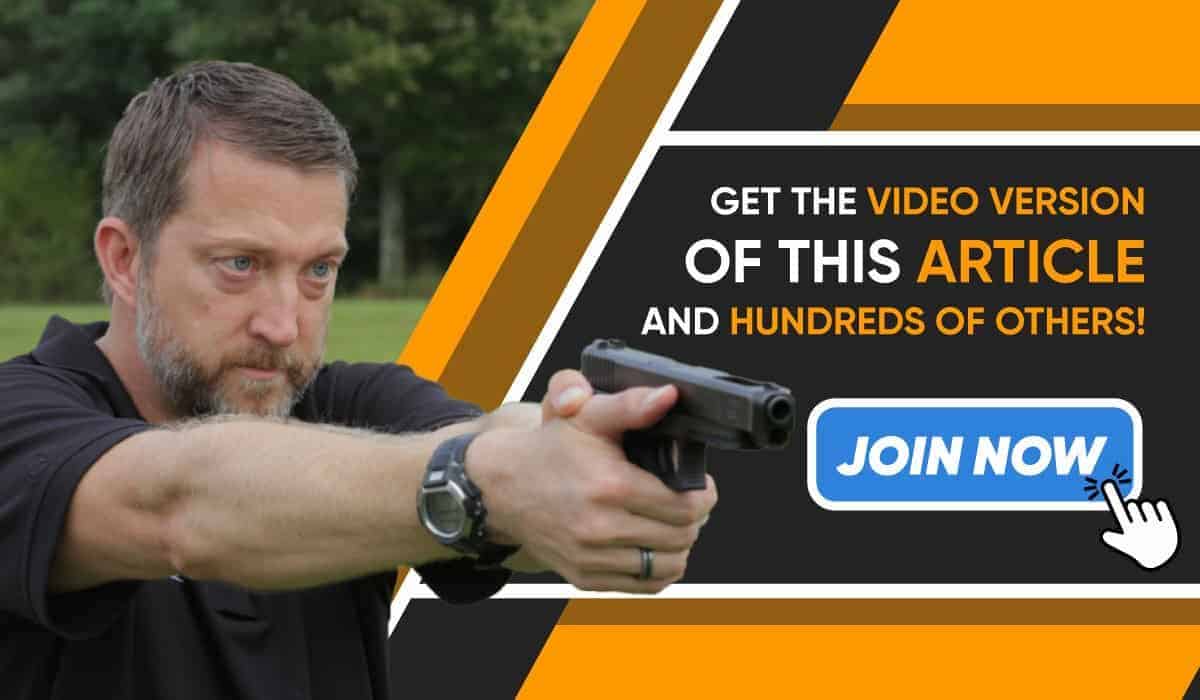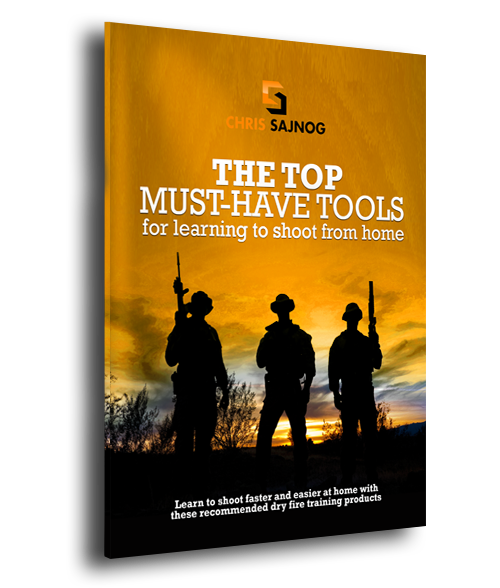Tactical Survival Gear – Too Much of a Good Thing?
I mean, who doesn’t love a new piece of kit! So many new gadgets, so little MOLLE! But don’t act like just because it’s on sale or there’s room on your gun you must need it. Each piece of gear you add to your kit comes with its own set of problems, so it’s important to weigh each piece on your tactical scale to see if the extra weight is worth it. If you’re a gear junkie, like I was, please allow me to point you to the road of recovery.
I don’t care if it’s your gloves, helmet, mag-pouch, or underwear; every single thing you wear and where it’s placed should have a legitimate use and reason why it’s in that specific location. If you MOLLE or attach something to your ballistic carrier just because it’s the only space available, you’re putting your team in danger.
Teamwork and Responsibility
Remember, when you put that gear on and get your weapons at the high-ready and you just got the “squeeze up” to take that first door, don’t ever forget that being part of a TEAM is about saving your buddy’s life and not your own. If you’re a burden because you don’t know how to access your equipment or you just have too much stuff attached to you because you think it looks cool, you’re really putting your team at risk more than yourself.
When it comes to equipment on the team, there are basic or standard issue items for your kit. But there are other items that maybe one or two other operators on the team will have that you don’t need. If you have a primary and secondary shotgun breacher assigned, why do you have shotgun pouches and ammo on your kit? Ditch the extra gear, brother, and take what you need for your position on the team.
I cannot stress it enough, you need to dry-fire and do so in full kit. You need to be comfortable wearing, moving, and accessing everything on your kit. If you’re called out to do a dynamic entry and you decide to grab some new piece of equipment just because it’s available, that’s a problem. If you didn’t practice with it, you shouldn’t feel comfortable just adding it at the last second.
Your tactical gear is just enough when you’re comfortable wearing, moving and accessing everything.
Breaking the Mishap Chain
You know if there’s a mishap the follow-on investigation always identifies a chain of events that ultimately led to the final incident. Each event in the chain is usually small, and as a singular event, it doesn’t seem like much. But when each individual event adds up to one another, the problem becomes compounded and the mishap occurs. By identifying one of the smaller events in the chain, you can eliminate the incident from occurring.
Let me share two mishaps with you that happened in the past couple of years that were directly related to tactical gear. I will leave out the units and names due to respect for those involved. Rest assured these are not made-up incidents and I hope that sharing them will give you something to think about when it comes to the importance of your gear and checking your gear.
The first mishap of having too much tactical survival gear happened about three years ago. An operator was at the range in full kit doing live-fire transition drills. He was working on transitions from his primary, the MK-18 rifle (5.56mm), to his secondary, the SIG P229R-DAK (.40 S&W) pistol. The drill was to fire two rifle rounds at ten yards, place the weapon on the safe as you begin your transition of letting the rifle hang on the sling, draw your pistol simultaneously, and fire two pistol rounds at seven yards.
During one of the drills, he either didn’t put his weapon fully on the safe or his kit hit the safety that wasn’t in the full safe position. Nevertheless, as he dropped the weight of the rifle to the sling it fired one 5.56mm round in and out of the side of his calf, through his boot, and in simple terms exploded through the top of his foot. Through the investigation, it was found he was adding things to the front of his kit (the front that was already stacked with backup ammo) between firing sequences, and that extra bulk is what ended up knocking the weapon off safe and pulling the trigger.
The second mishap happened this past year and caused an operator to pay the ultimate price; he lost his life during a Hook & Climb (H&C) training evolution. For those who may not know, H&C is a method of inserting a team from a small boat onto a non-compliant ship with a freeboard that cannot be traversed by the operator alone (like a large container ship).
H&C involves the use of a caving ladder that is attached to a long pole. As the insertion vessel comes alongside the ship the ladder is “hooked” to the gunnel or edge/railing of the ship, allowing the operators to “climb” or traverse the non-compliant vessel.
 You can be the one who breaks the chain and prevents a mishap from happening.
You can be the one who breaks the chain and prevents a mishap from happening.
Ensuring Gear Safety
In one of the qualification climbs during the night portion of the training, one of the operators ended up falling off the ladder from approximately twenty feet. He ended up in the water in full kit (about seventy pounds). He was able to tread water for a few seconds before he went under. After exhaustive searches through the night and into the next morning, his body was ultimately recovered by divers at the bottom that morning.
I know you’re asking about a life jacket or flotation. Tactical/CQC operators in this unit wear what’s called a Tactical Flotation Support System (TFSS) on our weapons belt (one on the left and one on the right). They are activated manually by pulling a small ripcord, which actuates a lever that punctures a small CO2 cartridge and inflates what I can only describe as large water wings. We wear two of them, but just inflating one more than provides sufficient buoyancy.
If the ripcord system or CO2 system fails, you can manually inflate the bladder through an attached one-way tube. And yes there is a survival swim in full-kit required to show proficiency in the TFSS. The first portion involves jumping into the pool and pulling the ripcords allowing the CO2 to inflate the bladders.
The second portion involves a seventy-five-yard swim; treading water for two minutes, drown-proofing for two minutes, followed by blowing up the bladders via the one-way inflation tubes. I won’t lie, the first time was tough and it took a lot of reps and pool time before I was comfortable being in and under the water in full kit.
Getting back to the mishap… Through the investigation, it was found that the operator didn’t even have any CO2 cartridges in either of his TFSSs. He was able to ditch his Kevlar helmet to reduce weight and he also attempted to pull the ripcord on his MOLLE ballistic carrier to ditch his vest (armor, plates, and anything attached to the vest).
The ripcord is an eighteen-inch wire cable that holds the vest together and when properly released it takes apart the carrier into six separate pieces, taking the bulk of the weight off the operator. Unfortunately, he was unable to fully clear the cable due to the configuration of his gear. It’s hard to understand how the operator missed things like this and makes you wonder if anyone conducted a “buddy check” before the climbs.
There were also other events in the chain surrounding the incident, but if his kit had been in order, he would have given himself the fighting chance he deserved. A very young man lost his life due to a lack of checking his equipment and complacency, and now his family must deal with this tragic loss.
Being a Master of Your Equipment
Again, I share these incidents with you so you can learn from them. The profession we choose is inherently dangerous, but there are things we can do to mitigate those risks. Be cognizant of your gear, how to use it, and how it’s configured on your kit before EVERY evolution. It’s your gear, it’s your kit, and how it operates and how you function wearing it is completely under your control.
It takes but a few minutes to check your gear and check each other’s gear. You can be the one who breaks the chain and prevents a mishap from happening on having too much tactical survival gear. Don’t forget the importance of “dry-firing” and training in full kit, as it’s a perishable skill set. Do it often and become a master of your equipment, as this is a key facet of fulfilling your responsibility and position on the team.





Smart and realistic advice. Same for cops and fireman as well, know your gear and how to dump it when necessary and being able to get to it.
It’s personal life insurance!